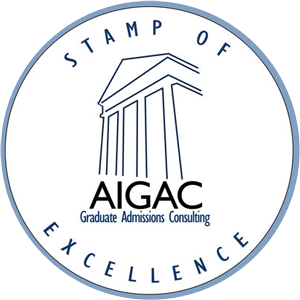Organizing ideas and life experiences into essays is one of the biggest concerns that our students have at The Art of Applying® — and for good reason. When you’re writing about your life, the order in which things happen and the significance of what you’ve experienced makes perfect sense to you. A reader who doesn’t have your perspective needs an organized presentation in order to be able to follow your story — especially as you’ll typically have a strict word count in which to convey what’s important.
Two types of sentences will help you put your ideas into boxes as you draft and revise your essays: The thesis statement and the topic sentence.
Thesis Statements convey your main argument. The thesis statement is where you convey your main argument. It’s typically found at or toward the end of your intro paragraph, with the sentences above introducing your topic. You want to make sure that the thesis statement engages directly with the prompt you’ve been given. It’s the place in your essay where you most directly tell how what you’ve lived has helped to prepare you for the school of your choice.
It’s also useful in organizing your essay. If you include clauses in your thesis statement, for example, talking about a high school course, a college experience, and an internship in an essay seeking admission to a graduate school program, the reader will expect individual paragraphs covering each of those three life experiences.
Topic sentences organize your writing and tell the reader what to expect. You’ll reinforce that by including a topic sentence at the start of each paragraph. The topic sentence establishes what you’ll cover in each body paragraph, and sets up the expectation that you’ll only cover that topic. There’s typically so much you want to say when you’re writing an essay that you’re tempted to pull in additional experiences as you’re thinking about what might relate. Those additional experiences may, however, do more to confuse the reader than clarify the point you’re trying make. If you’re writing about a high school class, for example, and you then jump back to an elementary school experience within that paragraph, it might not appear as relevant to your reader than it does to you.
The topic sentence not only gives your reader a guide to what to expect in the essay, but reminds you what you’re trying to accomplish in each paragraph. Thesis statements and topic sentences are helpful when revising your essays.
The thesis and topic sentences can also be important tools when you’re revising. You may have made a great point in your high school paragraph that really relates more to your internship paragraph; you would simply move that sentence in your editing to have it better meet your audience’s expectations. You may also, in your editing, find that a topic sentence or even your thesis needs to be changed to accommodate everything you want to say in a paragraph. That’s totally normal! You just want the thesis and topic sentences to sync to what you’ve written in your body paragraphs.
When you work with The Art of Applying®, you’ll get insights about your essay’s organization and advice on how to better relate your experiences to the people reading your essay. In the process, you’ll learn more about how to improve your writing, so you can reach your audiences no matter who they may be in the future.
To learn more about what we do and how we can help you, schedule your 15-minute Quick Call with our team today.



Leave a Reply